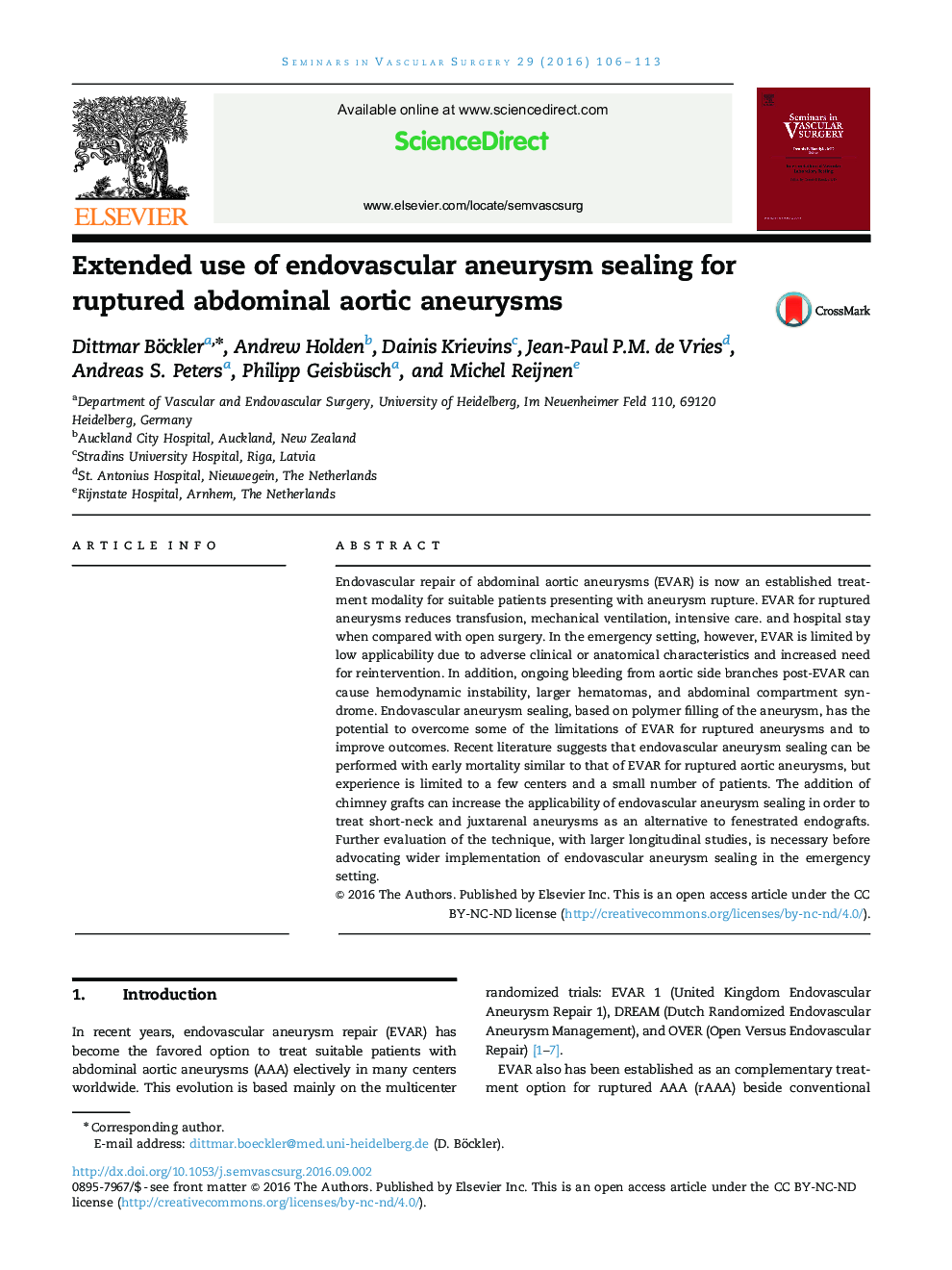| کد مقاله | کد نشریه | سال انتشار | مقاله انگلیسی | نسخه تمام متن |
|---|---|---|---|---|
| 5621695 | 1406148 | 2016 | 8 صفحه PDF | دانلود رایگان |
Endovascular repair of abdominal aortic aneurysms (EVAR) is now an established treatment modality for suitable patients presenting with aneurysm rupture. EVAR for ruptured aneurysms reduces transfusion, mechanical ventilation, intensive care. and hospital stay when compared with open surgery. In the emergency setting, however, EVAR is limited by low applicability due to adverse clinical or anatomical characteristics and increased need for reintervention. In addition, ongoing bleeding from aortic side branches post-EVAR can cause hemodynamic instability, larger hematomas, and abdominal compartment syndrome. Endovascular aneurysm sealing, based on polymer filling of the aneurysm, has the potential to overcome some of the limitations of EVAR for ruptured aneurysms and to improve outcomes. Recent literature suggests that endovascular aneurysm sealing can be performed with early mortality similar to that of EVAR for ruptured aortic aneurysms, but experience is limited to a few centers and a small number of patients. The addition of chimney grafts can increase the applicability of endovascular aneurysm sealing in order to treat short-neck and juxtarenal aneurysms as an alternative to fenestrated endografts. Further evaluation of the technique, with larger longitudinal studies, is necessary before advocating wider implementation of endovascular aneurysm sealing in the emergency setting.
Journal: Seminars in Vascular Surgery - Volume 29, Issue 3, September 2016, Pages 106-113
